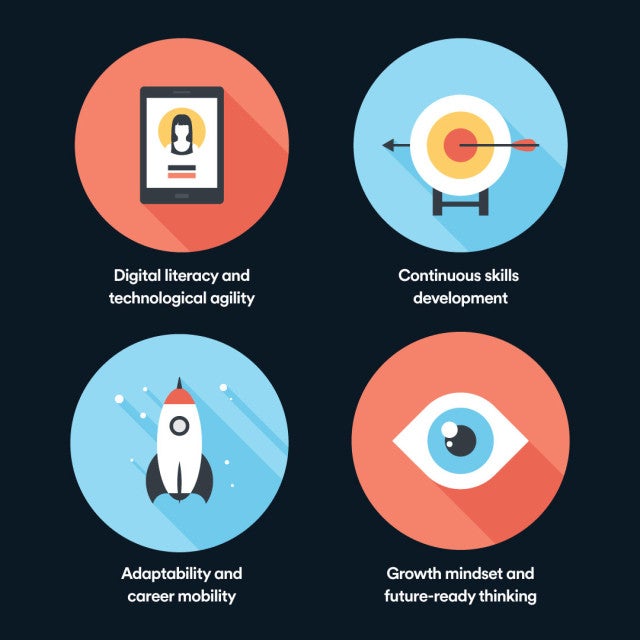
The State of Learning and Readiness
Building a Future-Ready Workforce
Based on our national workforce and higher education survey, conducted in partnership with The Harris Poll, this report offers trends and insights into workforce readiness, digital literacy, and generational change shaping the future of learning and work.
A workforce at a crossroads
Most workers today feel unprepared for the pace of change. The State of Learning and Readiness Report from Instructure finds that 70% of U.S. workers don’t feel ready to succeed as technology, AI, and shifting career paths reshape the world of work.
Yet, the desire to grow has never been stronger; people are eager to learn, upskill, and adapt.
This readiness gap is both a challenge and an opportunity.

What “readiness” really means
Readiness isn’t just about skills; it’s about confidence, adaptability, and lifelong learning.
The report identifies four key pillars, drawn directly from the survey data, that define how people build and sustain readiness today:
- Digital literacy and technological agility
- Continuous skills development
- Adaptability and career mobility
- Growth mindset and future-ready thinking
Together, they capture what it takes to stay ready as the world of work evolves.
Generational insights
Readiness looks different across generations.
The report uncovers how Gen Z, millennials, Gen X, and boomers each view the future of work. While the youngest workers express the greatest uncertainty, they also show the strongest drive to develop new skills and find meaningful learning pathways.
These generational perspectives point to new ways that both higher education and employers can close the readiness gap.

A shared path forward
Readiness thrives when learning is continuous and bridges education and work. The State of Learning and Readiness report explores what it will take to build that connected learning and readiness ecosystem, and how lifelong learning can power a more confident, future-ready workforce.
Download the full report

Harris Poll Method
Harris Poll Method
This survey was conducted online within the United States by The Harris Poll on behalf of Instructure from April 23–25, 2025, among 1,210 employed U.S. adults ages 18 and older. The sampling precision of Harris online polls is measured by using a Bayesian credible interval. For this study, the sample data is accurate to within +/- 3.4 percentage points using a 95% confidence level. This credible interval will be wider among subsets of the surveyed population of interest. For complete survey methodology, including weighting variables and subgroup sample sizes, please contact Brian Watkins at Instructure.